I get questions almost daily about sublimation shirts. Why do you need to sublimate on polyester and why can’t you sublimate on 100% cotton? I thought we would do a little experiment today. I have a stack of sublimation shirts that are 100% polyester all the way to 100% cotton, with a few variations in between. Let’s sublimate the same colors on all of them, run them through the laundry cycle, and see what happens. Then you will know what works for sublimation shirts and what does not. Please note that if you’re using infusible ink, the same thing will apply.
Have a cotton or dark shirt and want to sublimate on it? Here are my best tips and tricks for doing that!

Can’t watch the video or miss some of the information? Just follow along below!
Shirts Used for Experiment
I used a variety of brands of shirts for my experiments but here is a rundown of the polyester content:
- 100% polyester
- 75% polyester
- 63% polyester (industry standard is 65% minimum but this was as close as I could find)
- 50% polyester
- 100% cotton
- 80% polyester (this last version is actually blue so I could demonstrate why you want a light color when sublimating as well)
Some of My Favorite Sublimation Shirts
Here are a few of my favorite shirt brands that I use for sublimation regularly. You really can’t go wrong with any of these. Keep reading to see why these shirts with a high polyester content work best!
- Cricut (Use code CCC2023 to get 10% off and free shipping on orders over $50.)
- Artesprix (Use code CCC10 for 10% off.)
- Gildan Polyester
- Sport-Tek
- Amazon (I am adding some of my favorites into my store here)
Designs Used
Want to use the same designs that I am using on a shirt or project for yourself? Just get the Colorful Words Bundle here. Be sure to use code ANGIEHOLDEN for 10% off!
Testing Sublimation Shirts
I printed the files with the same paper, on the same printer, and the same settings. Everything was the same about the print. I pressed them all with the same exact settings in my heat press. That way I knew that everything was the same for all of the shirts that I pressed.
Shirts After Pressing
Let’s first take a look at those sublimation shirts before I run them in the laundry cycle and see what they look like just pressed.
100% Polyester
This first one is 100% polyester. I actually pressed two 100% polyester shirts. Why did I do that? I am going to keep one of them and not run it through the laundry cycle. That way we can tell if the sublimation fades at all on 100% polyester.
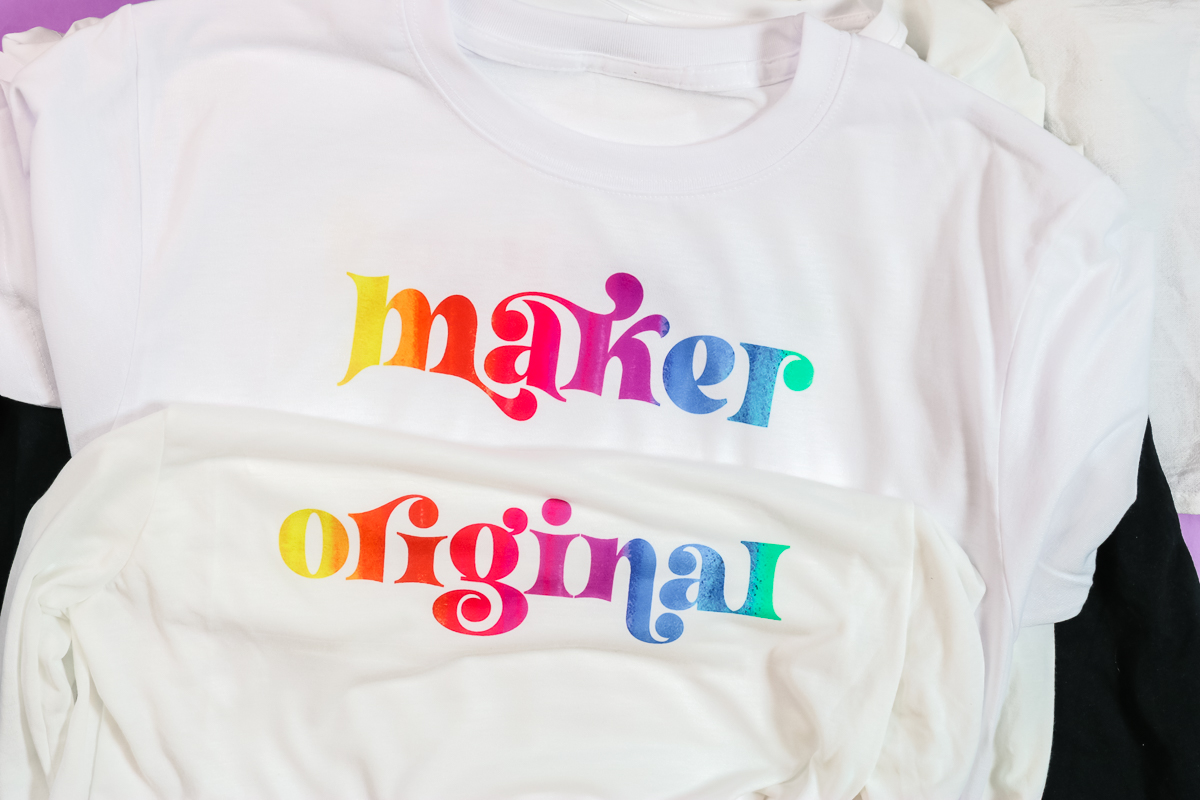
75% Polyester
This version is 75% polyester. That is generally what I recommend for a minimum polyester count. You can see that after pressing, it looks similar to the 100% polyester shirt that is below it.
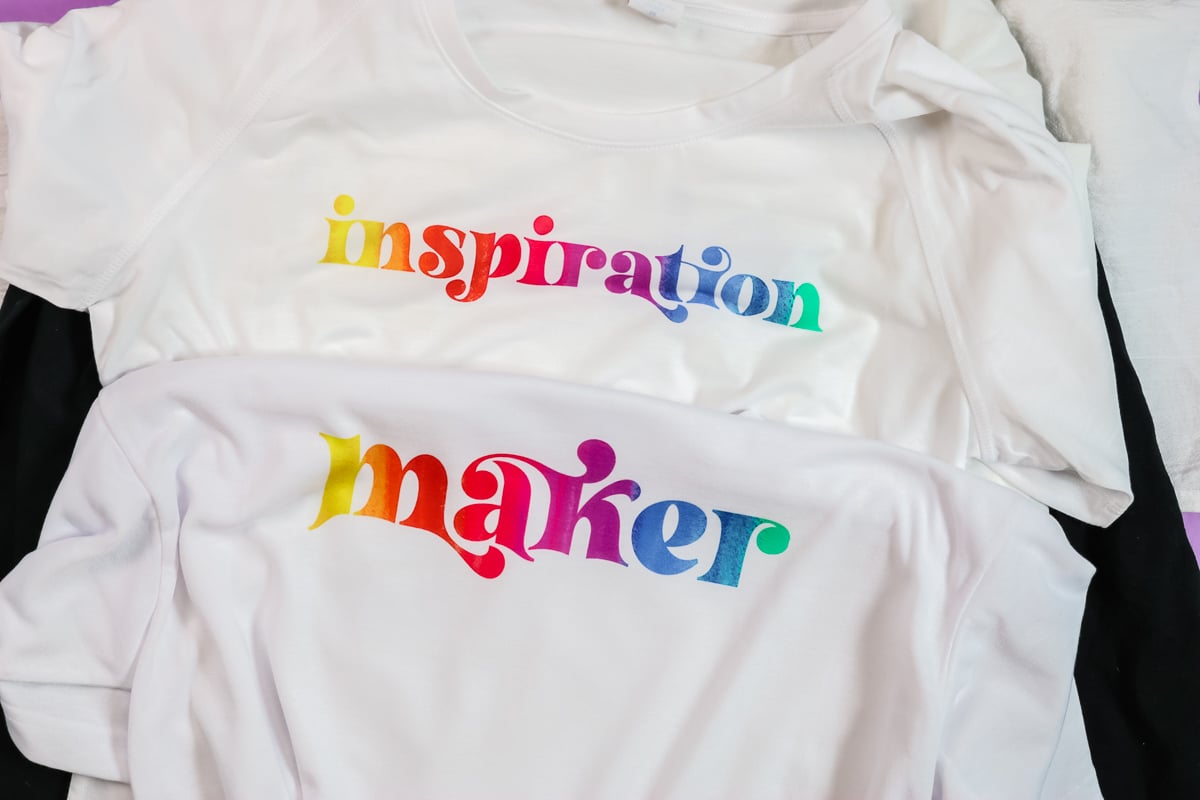
63% Polyester
This top shirt in the image below is 63% polyester. The general industry standard is 65% polyester. This is the closest one I could find. You can see that it is a little more faded than the 100% polyester.
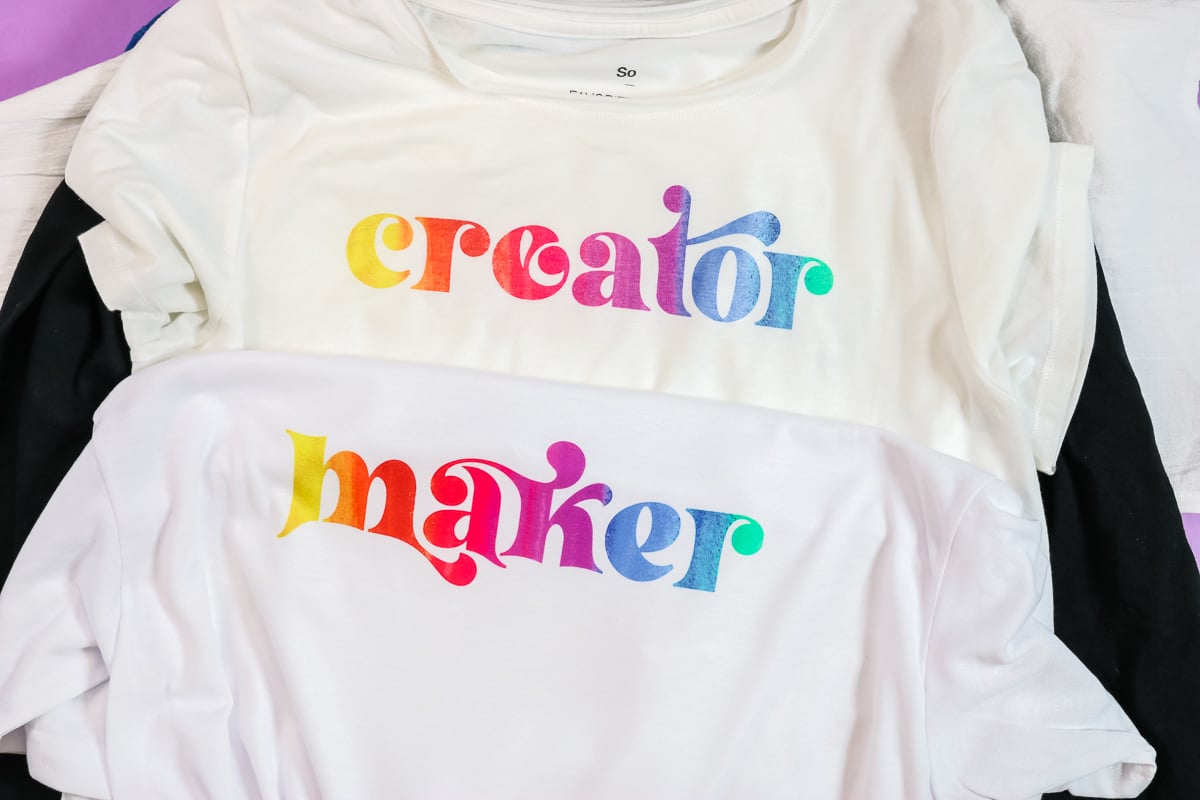
50% Polyester
This top shirt in the image below is 50% polyester, which actually isn’t recommended for sublimation. You can compare it to the 100% polyester and see that it is a little more faded.
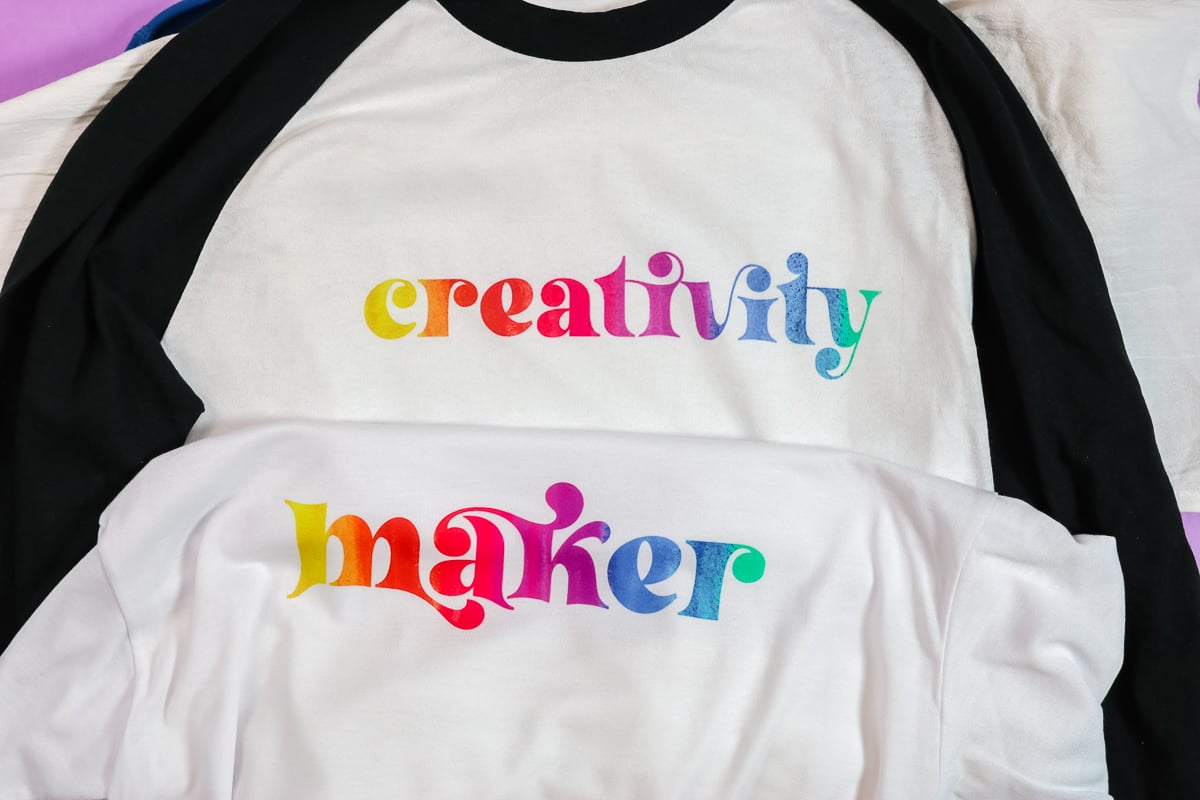
100% Cotton
This top version in the image below is 100% cotton which definitely is not recommended for sublimation. I expect this one to completely fade out after just one cycle through the laundry. You can see it’s almost completely faded out on this side in comparison with our 100% polyester on the bottom.
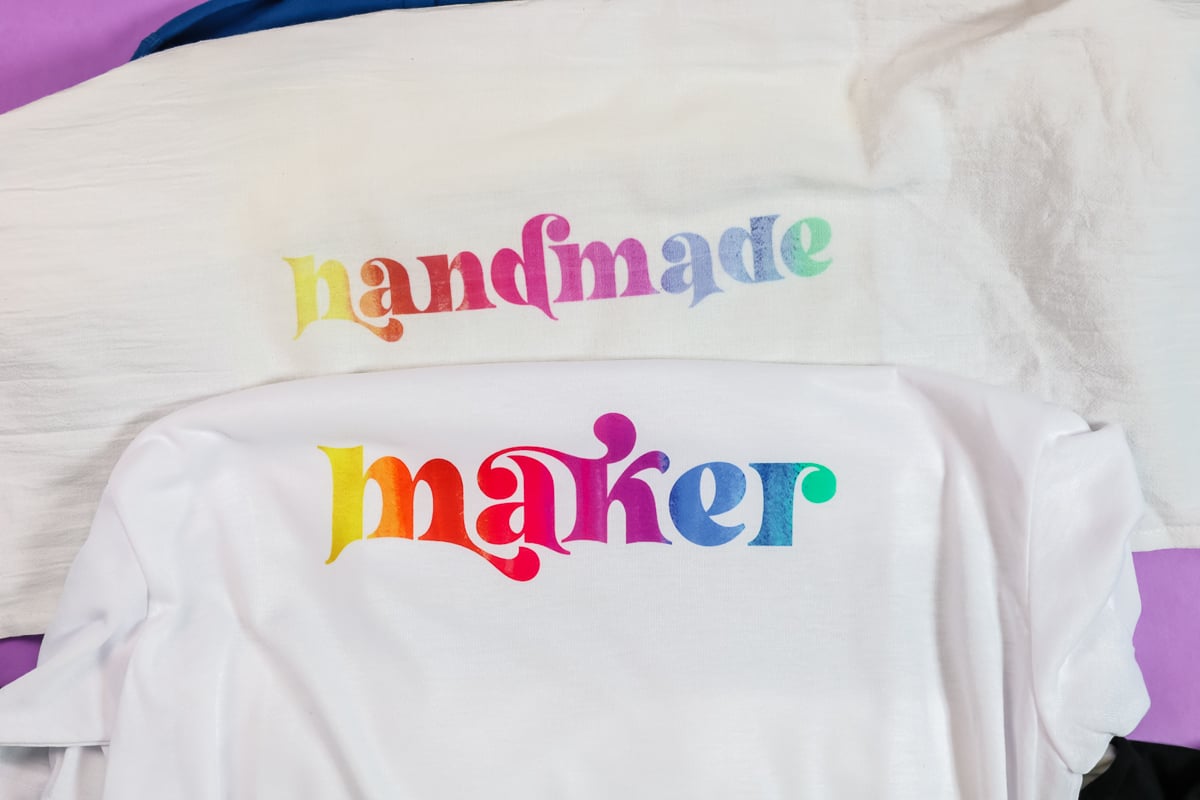
80% Polyester
Most of my blanks are a light color and actually white because sublimation does show up better on a light color. I did want to do one just to illustrate. This is 80% polyester and it is a dark color. You can see that it does show up, however, you lose some of the color. Sublimation is translucent. The base color is showing through my sublimation layer. You can see it in comparison with how the colors pop on the 100% white polyester shirt.
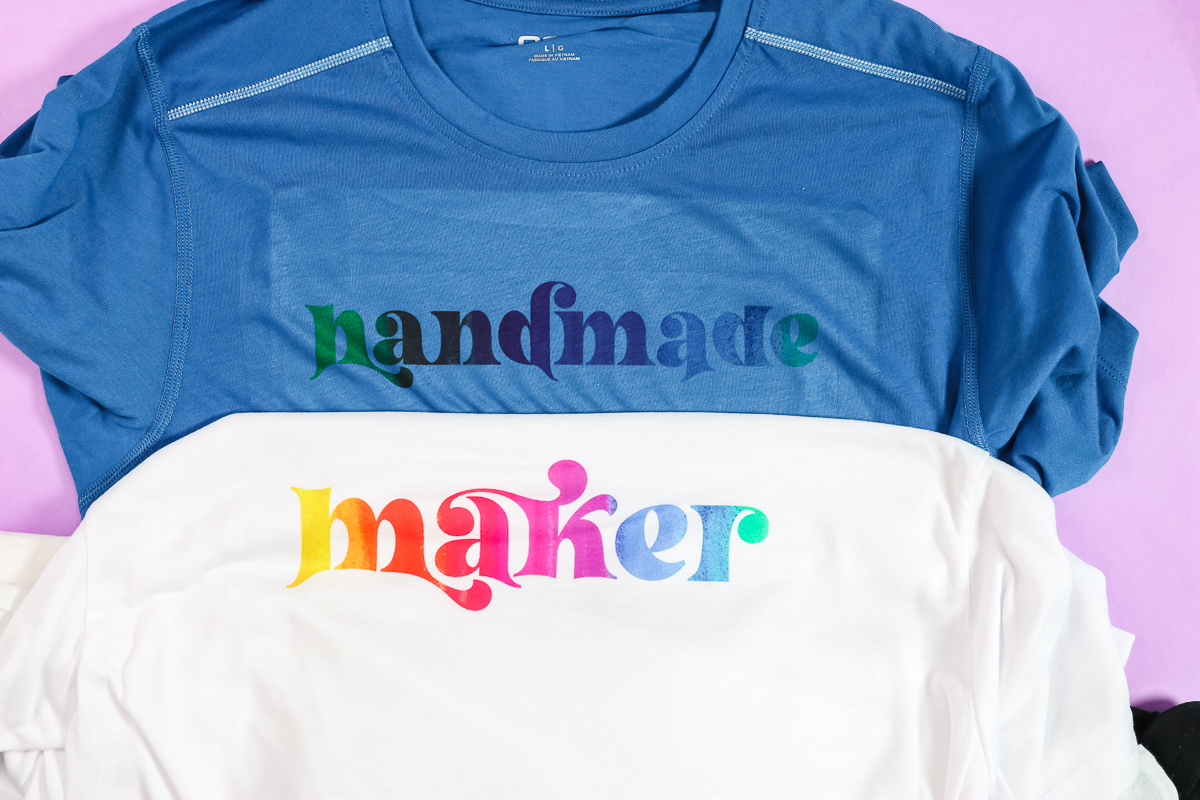
Shirts After Washing
Now that you’ve seen the shirts and how colorful they are, I’m heading to the laundry. I’m going to throw them in and we’ll see what happens.
Washed 100% Polyester
These are both 100% polyester shirts. As you can see, the colors did not fade at all. The colors look the same on the one I ran the laundry, as well as the one I did not. You can see that sublimation on 100% polyester has colors that pop out and look really amazing.
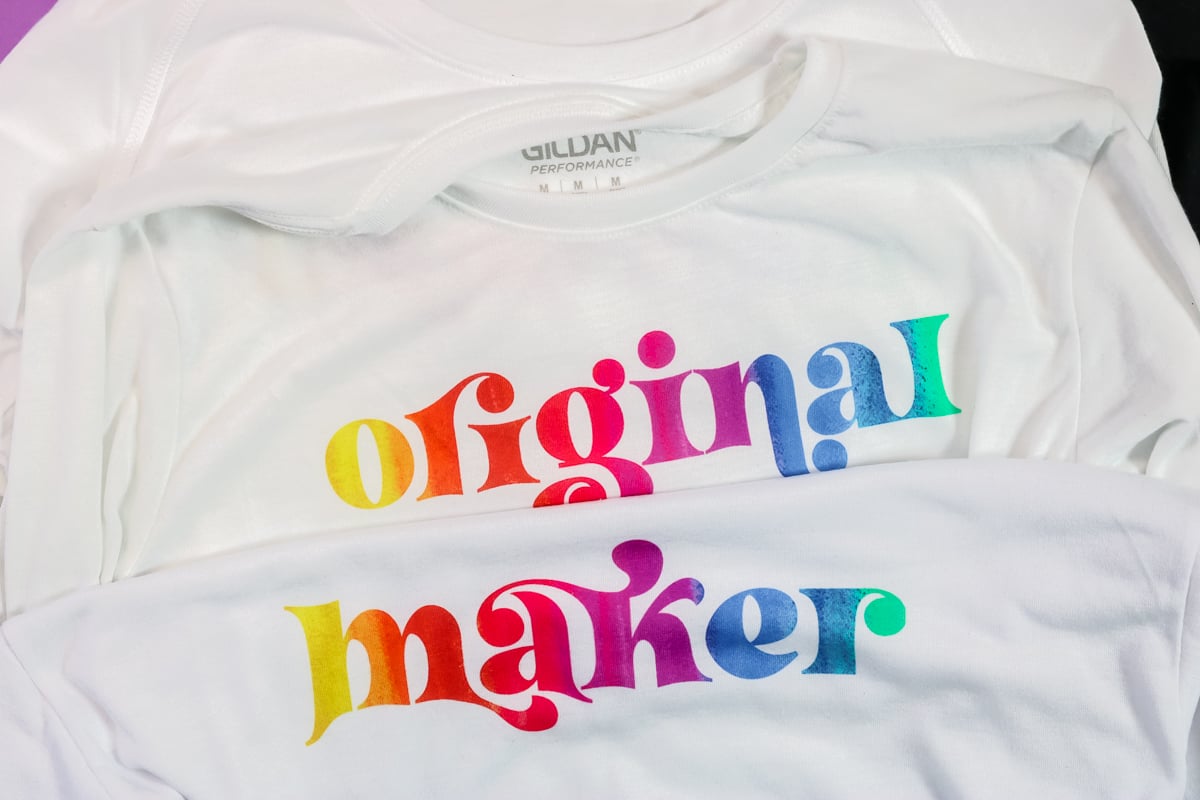
Washed 75% Polyester
The top shirt in the image below is 75% polyester. You may be able to see that the colors are a little bit more faded on the 75% polyester, especially the greens and purples. It is a little bit faded, but it still looks really good. It really pops off of the shirt.
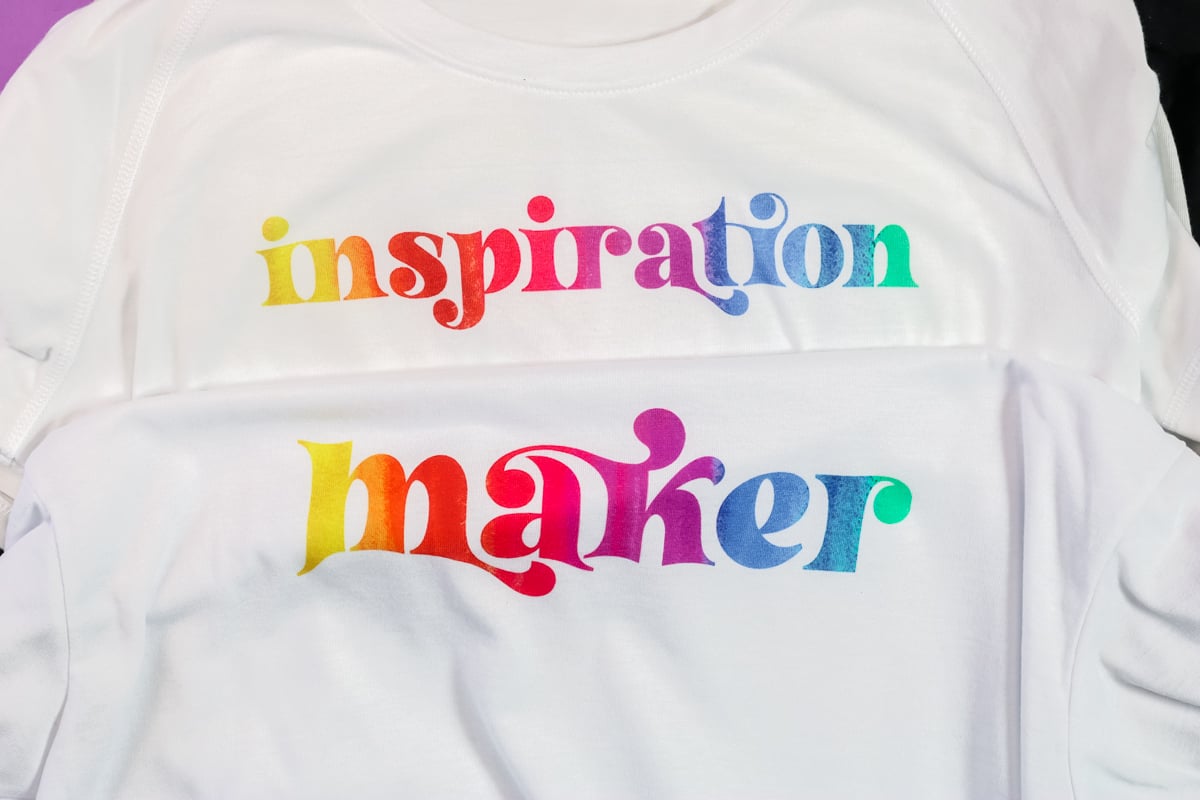
Washed 63% Polyester
The Creator version is the 63% polyester after the laundry cycle. All of the colors look faded in comparison to the 100% polyester shirt. Every single color looks a little bit lighter on the 63% polyester. Basically, some of the ink came out. When you’re dealing with a shirt that is 63% polyester, only 63% of the ink actually bonds to the fabric. You’re only left with 63% or roughly that of the ink after you run it through the laundry cycle. Keep that in mind when you’re picking your shirts.
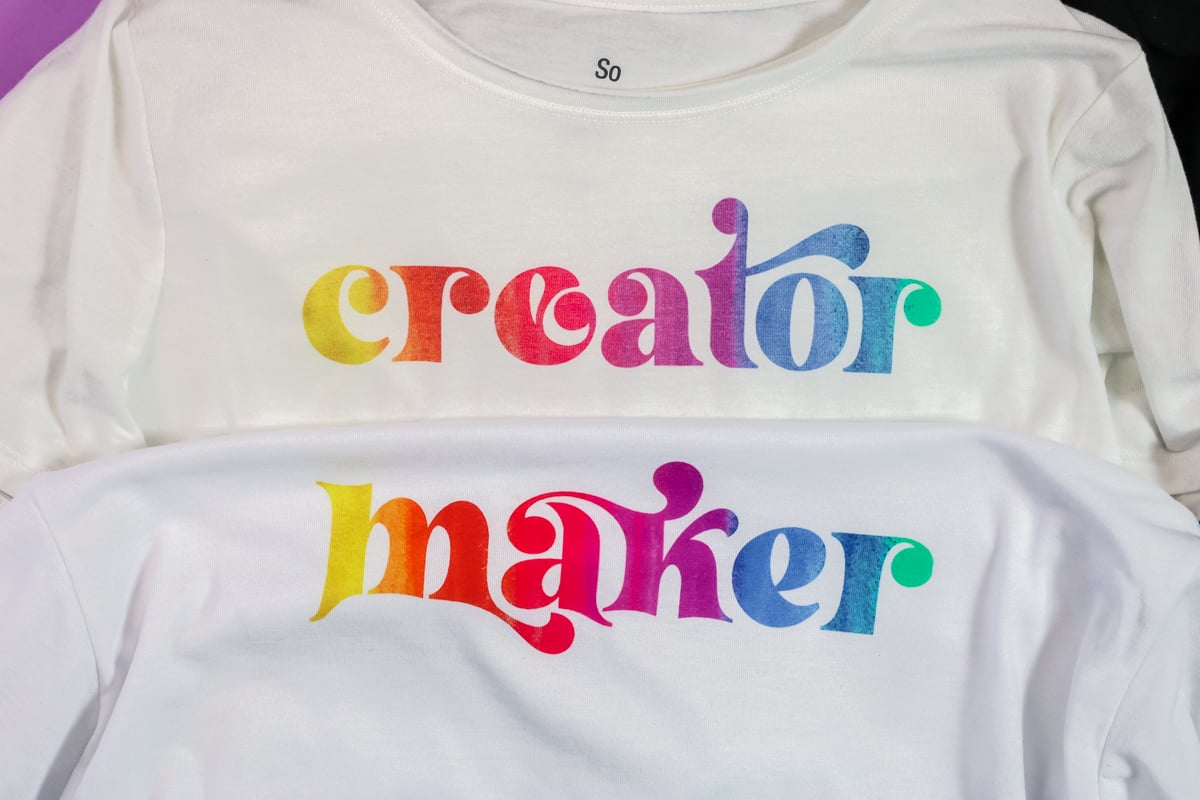
Washed 50% Polyester
This Creativity version is 50% polyester. Hopefully, you can see a difference between these two. The Maker definitely pops quite a bit more, whereas the Creativity is faded on all of the colors.
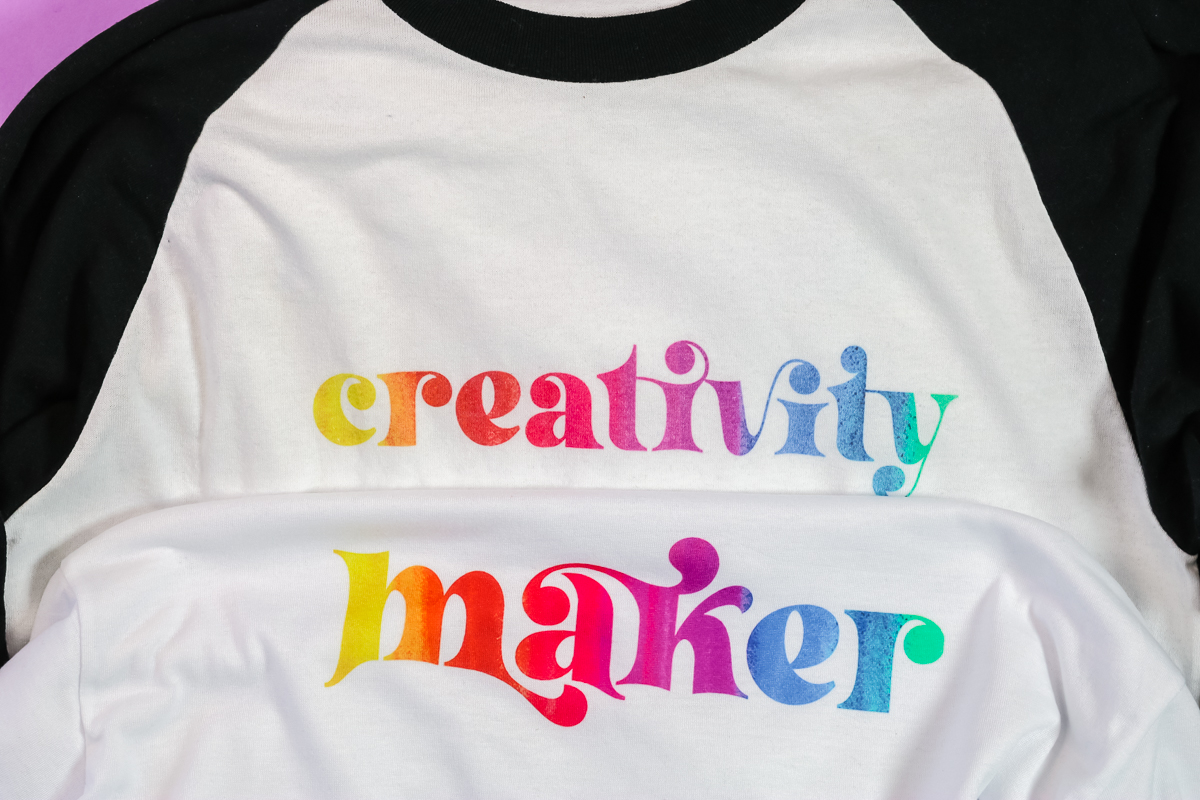
Washed 100% Cotton
Here is my 100% cotton example. It really, really faded, but it did stain the fabric. I do think it would continue to fade because there’s nothing really for it to bond to, whereas the sublimation doesn’t fade after several laundry cycles. When you get a look like this where it’s completely faded and the colors are not popping, be sure to look at the material content of your blank and see what it is. Chances are, you have a cotton blank and your sublimation ink is just not bonding to that.
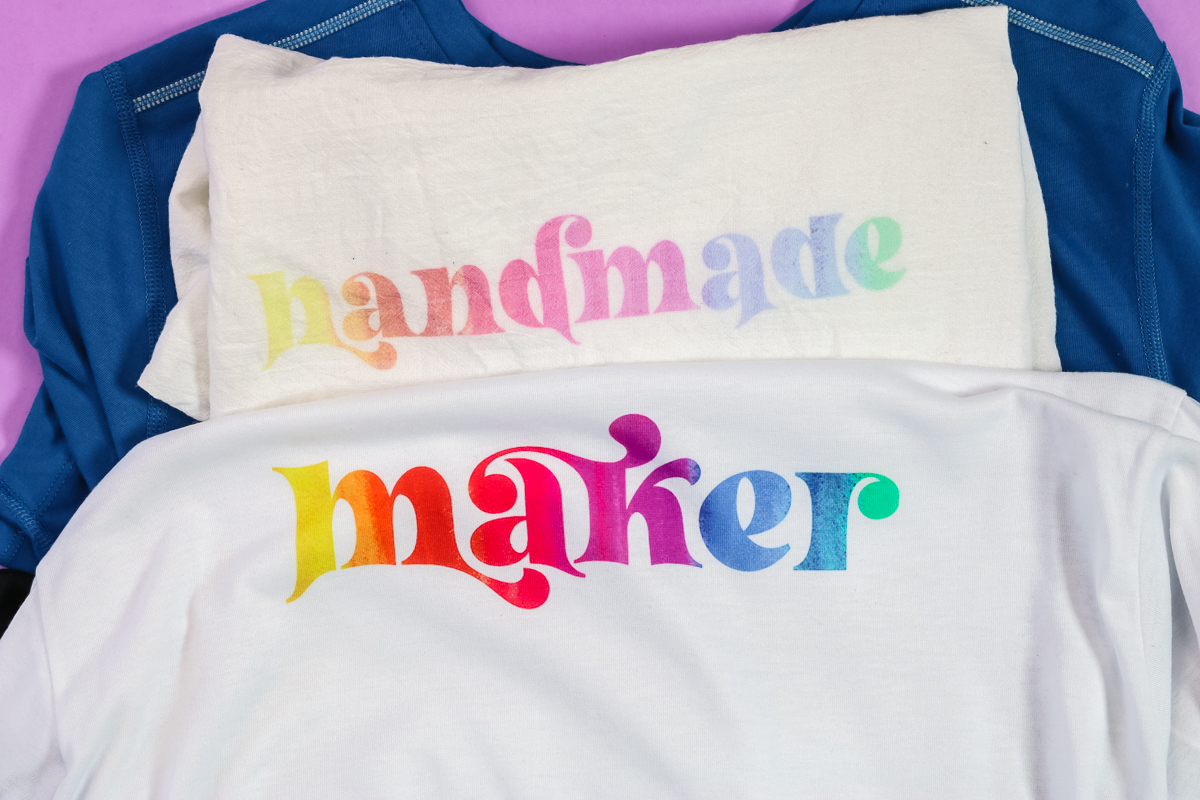
Washed 80% Polyester
This version is our 80% polyester shirt that is a color. You can see what these colors look like after a laundry cycle in comparison to the white. I have a little bit of fading or it may just be where it’s blending in with the blue on the edge. You can see that the blue definitely does change the color as well as the appearance, even after the laundry cycle.
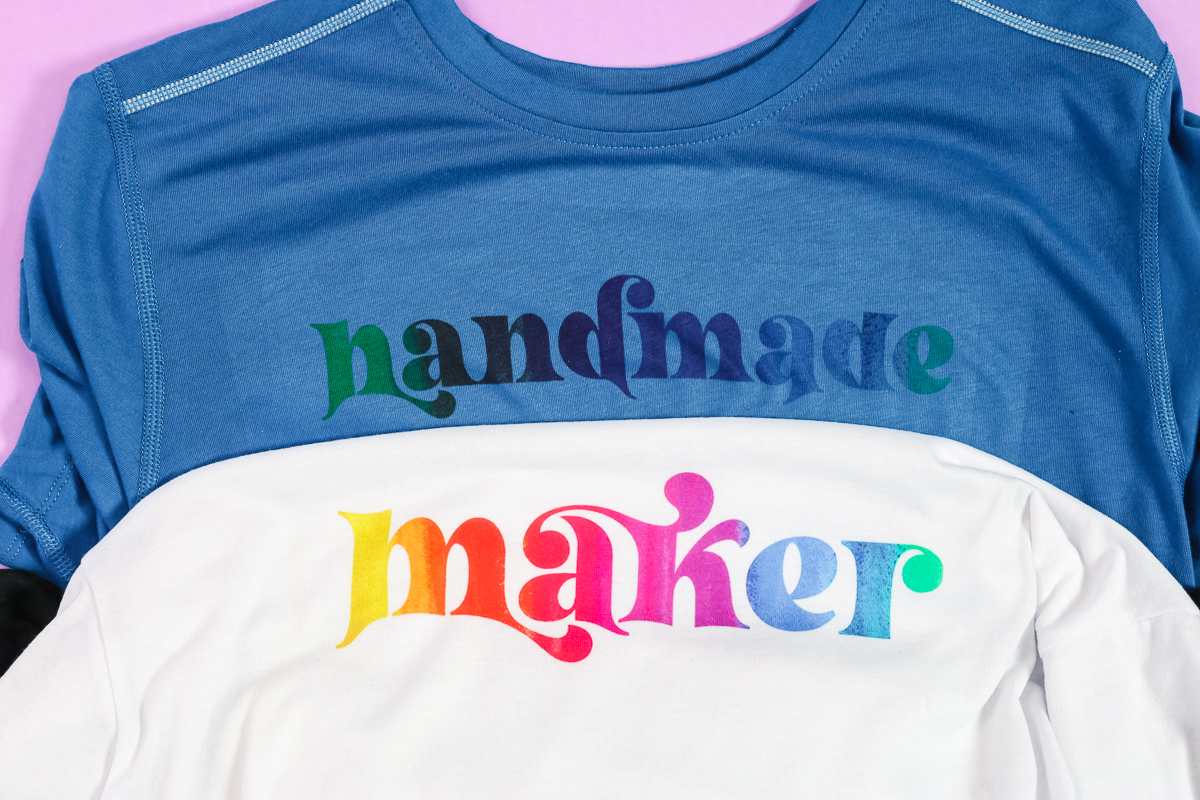
How to Test Your Sublimation Colors
Now you can see why maybe you’re having trouble with your colors popping. I get emails all the time from people with questions about their colors not popping like someone else’s. If your colors aren’t popping on a sublimation tumbler or sublimation mug, get a 100% polyester shirt or even a 100% polyester piece of fabric. Press your print to that. See if the colors are working. That eliminates a printer problem. That means it’s your blank.
If the colors don’t pop on the 100% polyester, that may mean there’s something wrong with your printer. That’s why I always recommend 100% polyester when you are running those tests. Because as you can see, you can get faded results with things that are not 100% polyester. Hopefully, this helps answer the question of how much polyester content do you need in sublimation shirts.
How Much Polyester Do You Need?
For me personally, I always try to stick with 75% polyester or greater. As you could see, those really don’t fade much at all. I get really good results. The industry standard is about 65% polyester or greater. I do find a little bit of fading at 65%. But if you’re looking for a vintage look to your shirt, 65% is definitely the way to go. Anything less than that, then you will be getting a more vintage look.
With something like 100% cotton, you may not get a print at all or you may get what I got, which was staining of the surface, which is going to really fade over time. With each laundry cycle, you’ll see a little bit less and less of that ink on the 100% cotton. Whereas something like the 100% polyester, I’ve tested it before and it lasts after every laundry cycle. I did like 35 on my last test and it was still going strong! You can see more about that experiment here.
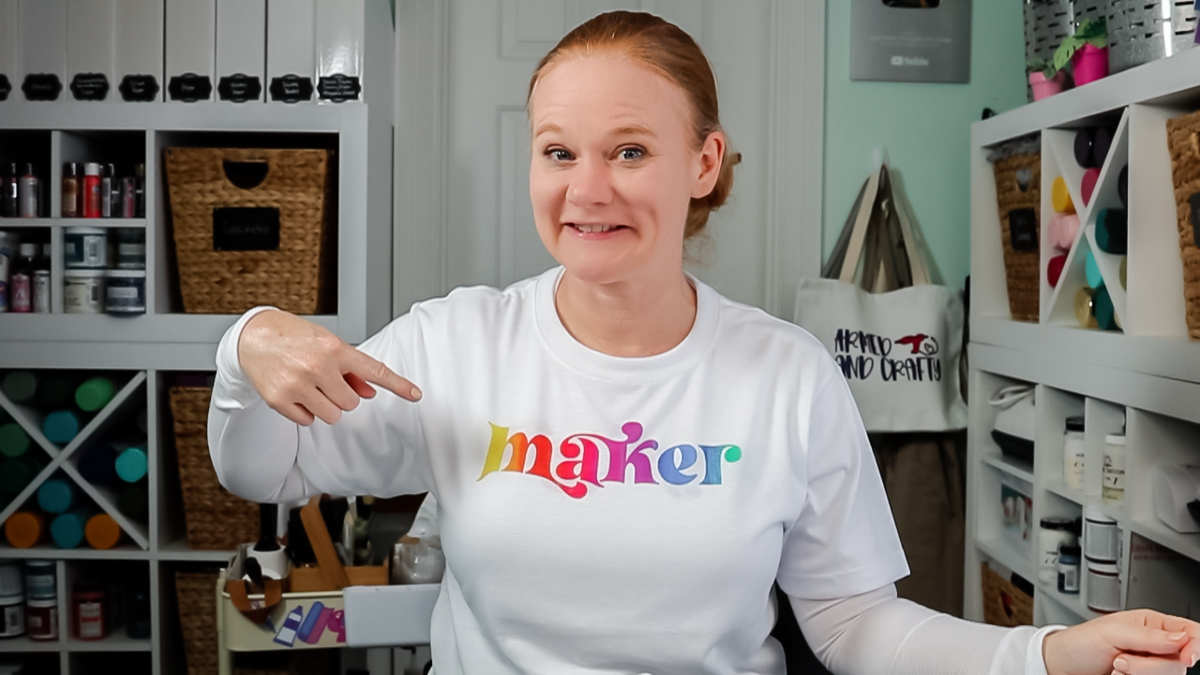











Great article. Thank you! I have shirts that are 100% polyester with a cotton feel. I’ve sublimated on full poly and never faded. Washed inside out, cold, gentle , hung to dry well over 24 hours after sublimated.